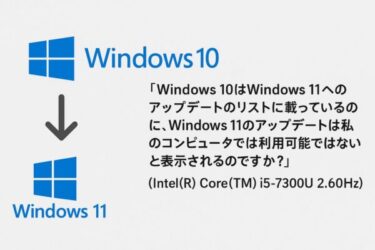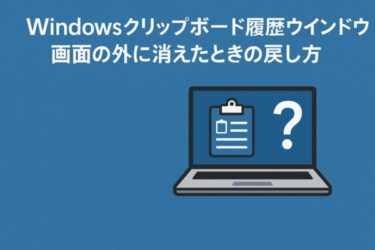![[Full Guide] How to Fix ntoskrnl.exe BSOD Random Crashes – Causes, Solutions, and Hidden Tricks 1 Blue digital graphic with large bold text: ‘FIX ntoskrnl.exe BSOD’ on a simple blue background with subtle diagonal lines.](https://kimiyoya.com/wp-content/uploads/2025/06/599C57D7-BC48-468F-A6D0-5C28C0CED27D-300x200.jpg)
Have you been dealing with random Blue Screen of Death (BSOD) crashes that mention ntoskrnl.exe?
Or does it sometimes happen right when Chrome or Firefox won’t open, or while a game is launching?
You’re not alone. This BSOD looks mysterious because the kernel name appears, but the real culprit is usually elsewhere. Below is the up-to-date, step-by-step playbook that works on Windows 10 and Windows 11 (including 24H2/25H2).
What is ntoskrnl.exe (and why it shows up in BSODs)?
ntoskrnl.exe is the Windows NT operating system kernel — the core that handles memory, process scheduling, hardware abstraction, security, and more. When a low-level failure occurs, crash reports often point to the kernel because that’s where the fault surfaced, not necessarily where it started. In short: ntoskrnl.exe is the victim, not the criminal.
Common Root Causes in 2025
| Category | Specific Cause | Why it Triggers the Kernel |
|---|---|---|
| Graphics stack | Corrupted/unstable GPU driver, HAGS side effects | Driver or scheduling glitches at kernel boundary cause faults under load. HAGS can help some PCs but destabilize others. |
| Memory (RAM) | Borderline XMP/OC, marginal DIMM | Real-world access patterns trip errors that synthetic tests miss. |
| Storage | SSD firmware issues / media errors | Read/write faults bubble up as kernel exceptions. |
| Power delivery | PSU voltage droop under spikes | Transient undervoltage → GPU/CPU driver timeouts. |
| Security & hardening | Memory Integrity (HVCI), vulnerable drivers blocked | Stricter kernel enforcement exposes shaky drivers. |
| Software conflicts | AV/overlay/monitoring tools, old filter drivers | Kernel hooks collide with updated OS components. |
Note: Windows 11’s Memory integrity / Core isolation and related hardware security features are increasingly enabled by default on modern hardware; flaky third-party drivers can misbehave when these protections are active. You can confirm the feature in Windows Security → Device security.
Fix It Fast: a Proven Order of Operations
1) Repair Core System Files (do this first)
Open Command Prompt (Admin), then run:
sfc /scannow
DISM /Online /Cleanup-Image /RestoreHealth
SFC repairs protected files; DISM heals component store corruption that can cascade into kernel crashes.
2) Clean-Install Your GPU Driver (not just “update”)
For NVIDIA/AMD/Intel, remove remnants (e.g., with a clean-install option or a reputable uninstaller in Safe Mode), then install the latest WHQL driver from the vendor. If the BSOD started right after a driver update, roll back one version to confirm.
Tip (2025): If you use Hardware-accelerated GPU scheduling (HAGS), toggle it Off and test: Settings → System → Display → Graphics → Change default graphics settings. Not all GPUs/drivers expose this toggle; availability depends on WDDM and driver support.
Why it helps: The graphics stack is a top trigger for ntoskrnl-flagged BSODs during games, encodes, and browsers that use GPU acceleration. Some capture/streaming apps also recommend disabling HAGS when troubleshooting crashes.
3) Stabilize Memory & Storage
- Turn off XMP/OC temporarily and retest. Borderline timings often pass synthetic tests but fail under real workloads.
- Run Windows Memory Diagnostic (restart required) and check results in Event Viewer.
- Check disks: Drive → Properties → Tools → Error checking. For SSDs, use the vendor tool (e.g., Samsung Magician) to review health and firmware.
4) Eliminate Software Conflicts (Clean Boot)
Disable non-Microsoft services and startup apps, then retest. If BSODs stop, re-enable items in batches to find the offender. Search → msconfig → System Configuration.
5) Firmware & Chipset
- Update your motherboard BIOS/UEFI to a stable release (follow OEM instructions).
- Install the latest chipset package (AMD/Intel) to align power/PCIe/USB behavior with the OS.
- Keep Memory integrity enabled if possible; instead of turning it off, fix/replace drivers that Windows marks as incompatible.
6) Power Delivery Reality Check
Under gaming or render loads, watch 12V/5V/3.3V rails with a hardware monitor. Sudden dips can provoke kernel-level timeouts. Try another known-good PSU if symptoms persist only under spikes.
If Crashes Tie to Windows Updates
Occasionally a cumulative update exposes weak drivers or corrupted components. After SFC/DISM, you can reinstall the current update via the Microsoft Update Catalog, or generate WindowsUpdate.log for deeper analysis using Get-WindowsUpdateLog and inspect CBS.log.
Hidden but Effective Tricks
- Re-seat RAM/GPU and replace questionable SATA/PCIe power cables. Intermittent contacts = intermittent kernel crashes.
- Browser/GPU settings: if BSODs correlate with Chrome/Firefox launch, temporarily disable browser hardware acceleration to test.
- In-place repair install (a.k.a. “repair upgrade”): run Windows setup from the latest ISO and choose Keep apps and files. This refreshes the OS without a wipe and often cures stubborn kernel faults.
Quick Reference
| Symptom | Likely Cause | Fix |
|---|---|---|
| BSOD during gaming/encoding | GPU driver / HAGS / power transient | Clean-install WHQL GPU driver; toggle HAGS; check PSU rails. |
| Random BSOD all day | Corrupted components / shaky driver | SFC → DISM; clean boot; update BIOS/chipset. |
| Crashes after Windows Update | WU pipeline or driver clash | Re-apply via Catalog; inspect WindowsUpdate.log/CBS.log. |
| BSOD with no obvious pattern | Borderline RAM/XMP or cable/contact | Disable XMP; Windows Memory Diagnostic; re-seat modules/cables. |
Bottom line: treat ntoskrnl.exe as the messenger. If you methodically stabilize drivers, memory/storage, firmware, and power — and use SFC/DISM early — most systems can be recovered without replacing expensive hardware.
✔️ You might also like:
▶︎ Chrome Won’t Launch and Remains “Paused” — Causes and Fixes
▶︎ KB5039302 Windows 11 Update Error – Symptoms, Causes, and Real Fixes
▶︎ June 2025 Windows 11 Update Errors – Complete Guide for Troubleshooting
← Back to English Article List
✔️You might also find these helpful:


